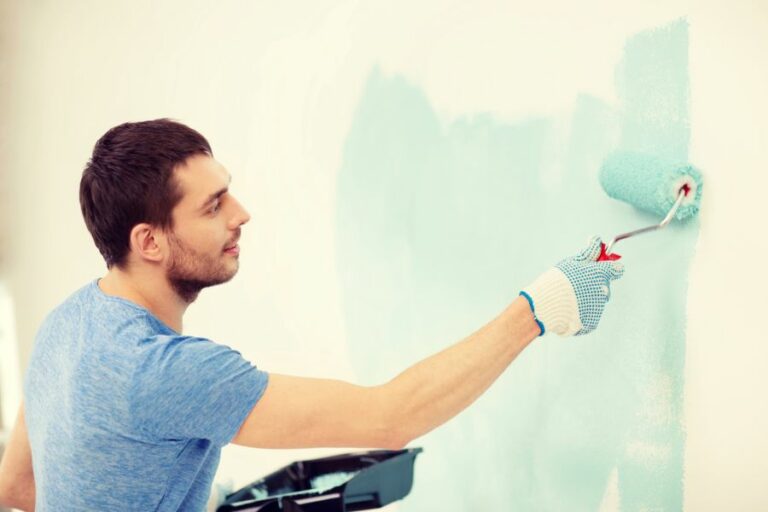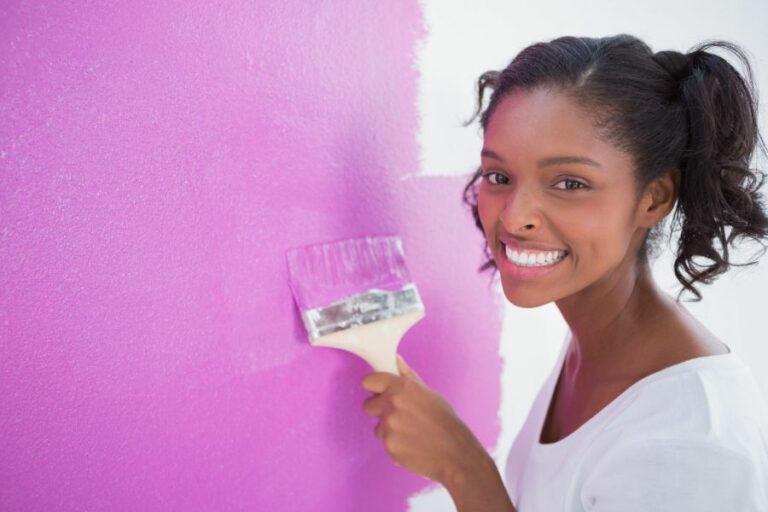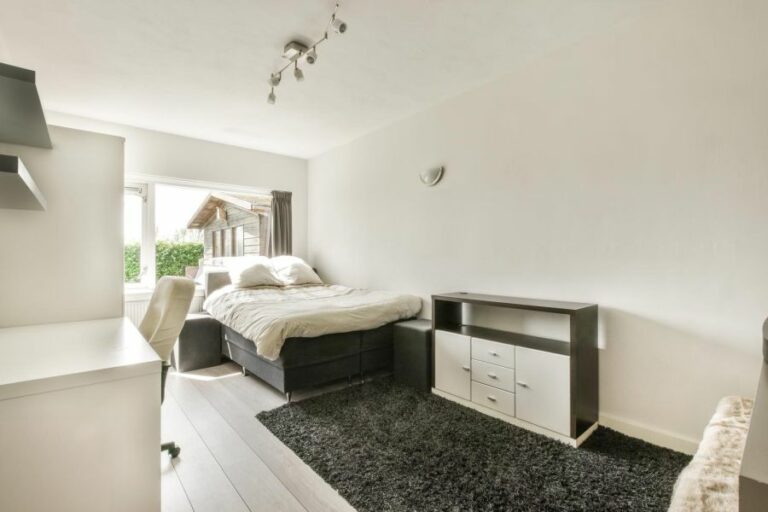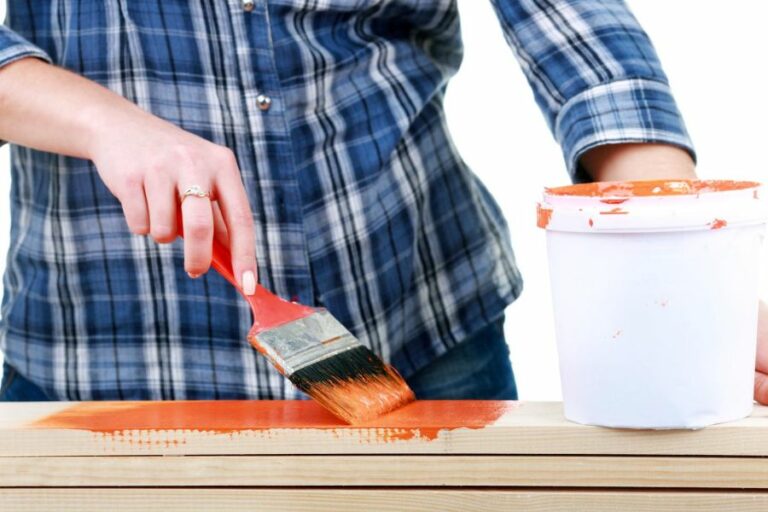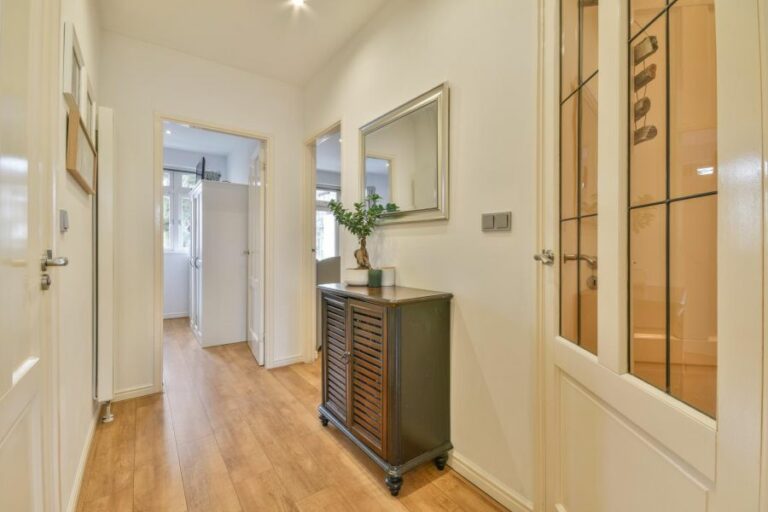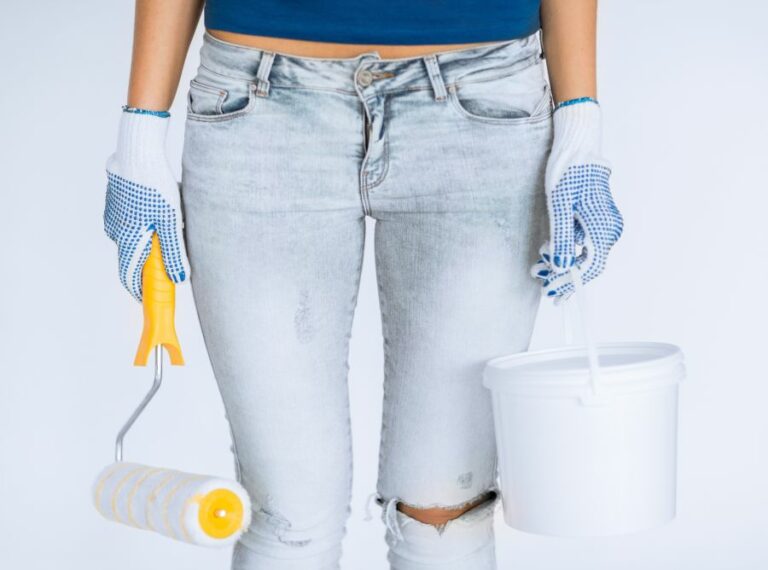Long-Lasting Wall Paint For Indoor Use, 25 Things You Should Know
If you’re tired of constantly redecorating and want a wall paint that stands the test of time for your indoor space, we’ve got you covered. We understand the importance of durability and aesthetics when it comes to choosing the perfect paint for your walls. To help you with this, we have researched and identified the best long-lasting wall paints for indoor use.
Long-lasting wall paint for indoor use:
Long-lasting wall paint for indoor use includes options such as Benjamin Moore Aura, Sherwin-Williams Duration Home, and Behr Marquee. These paints offer durability, resistance to damage, low VOC content, and easy cleaning. To achieve a lasting finish, assess room needs, choose the right finish, prepare surfaces properly, and follow manufacturer recommendations.

Ready to give your home’s walls the ultimate makeover with long-lasting paint? Discover the top durable paints for a flawless interior finish, easy application tips, and more. Keep reading to transform your space and let your walls shine for years!
Contents
- 1 Durable Interior Wall Paint for Lasting Finish
- 2 Enduring Wall Paint: Types & Recommendations
- 3 Quality Paint Choices for Interior Walls
- 4 Long-Term Paint Selection for Your Home
- 5 Choose the Paint that Lasts 100 Years
Durable Interior Wall Paint for Lasting Finish
In recent years, advancements in the paint industry have produced high-quality, long-lasting wall paint for indoor use. These paints provide a visually appealing finish and exhibit exceptional durability, with some even lasting for decades.
• Characteristics of Long-Lasting Wall Paints
– High Resistance to Damage
One of the most important characteristics of long-lasting wall paint is its resistance to damage. This can include but is not limited to, the ability of the paint to resist chipping, peeling, cracking, or fading. The higher the resistance to damage, the longer the lifespan of the paint will be.
– Environmentally Friendly
Long-lasting wall paints are also typically more environmentally friendly than their counterparts. Many high-quality, long-lasting paints are made from low or zero-volatile organic compounds (VOCs), which are less harmful to the environment and improve the air quality in the room they are applied.
For a list of low-VOC and VOC-free paints, visit the Environmental Protection Agency (EPA) website.
– Easy to Clean
Another characteristic of long-lasting wall paint is its ability to be easily cleaned without damaging the wall or paint. This is particularly important in high-traffic areas such as hallways, kitchens, and children’s rooms.
Easy-to-clean paints make maintaining the walls of your home a simple process, helping them to maintain their appearance and prolong their lifespan.
• Top Recommendations for Long-Lasting Wall Paints
Based on these characteristics, here are three top recommendations for long-lasting wall paint for indoor use:
1. Benjamin Moore Aura
The Benjamin Moore Aura line of paint is known for its exceptional durability and resistance to damage. Additionally, it has low VOCs and is self-priming, reducing the number of coats needed to achieve a smooth, even finish.
2. Sherwin-Williams Duration Home
The Sherwin-Williams Duration Home paint line is a popular choice for long-lasting wall paint. It offers excellent coverage, is easy to clean, and has a low VOC content. Additionally, it is available in various finishes, making it suitable for any room in the home.
3. Behr Marquee
Behr Marquee is another excellent option for long-lasting wall paint. It provides superior stain resistance and can withstand multiple cleanings without showing signs of wear. Additionally, it has low VOCs, contributing to a healthier indoor environment.
• Tips for Selecting and Applying Long-Lasting Wall Paint
To ensure you choose the best long-lasting wall paint for your needs, consider the following tips:
– Assess Your Specific Needs
Before purchasing long-lasting wall paint, assess the specific needs of the room or rooms you plan to paint. For example, consider factors such as the amount of natural light, the level of traffic, and the room’s primary function.
These factors will help determine which paint features are most important, such as stain resistance, cleanability, or fade resistance.
– Choose the Right Finish
The finish of the paint, which refers to its appearance and sheen, can greatly affect the overall look and longevity of the paint job. There are several finishes to choose from, including flat, eggshell, satin, semi-gloss, and gloss.
In general, the higher the sheen, the more durable and easier to clean the paint will be. When selecting a finish, consider the room’s function and the level of wear and tear it is likely to experience.
– Proper Surface Preparation
To ensure a long-lasting paint job, proper surface preparation is crucial. This includes cleaning the walls thoroughly to remove any dirt, oils, or mildew, repairing any imperfections, and applying the appropriate primer.
Taking the time to prepare the surface correctly will help the paint adhere better and ultimately last longer.
– Follow Manufacturer Recommendations
Finally, it is essential to follow the manufacturer’s recommendations when applying the paint. This can include guidelines on the number of coats needed, drying times, and ideal conditions for application. Adhering to these recommendations will help ensure the longevity and durability of the paint.
In conclusion, selecting the right long-lasting wall paint for indoor use can significantly impact the lifespan and appearance of your paint job.
By considering factors such as the characteristics of the paint, room specifications, and proper application techniques, you can achieve a high-quality, durable finish that will keep your walls looking great for years to come.
Enduring Wall Paint: Types & Recommendations
Painting your walls is a great way to refresh your living space and protect your surfaces. However, not all paint types are equal in terms of durability and longevity.
• Understanding the Different Types of Paint
Before we dive into which paint type is the most long-lasting, it’s essential to understand the primary types available in the market. These include:
- Water-Based Paint (Latex)
- Oil-Based Paint
- Acrylic Paint
- Enamel Paint
– Water-Based Paint (Latex)
Water-based paint, also known as latex paint, is the most popular choice for interior walls. It is known for its ease of use, quick drying time, and low odor.
Latex paint can be easily cleaned with soap and water, and it typically has low VOC (Volatile Organic Compound) levels, making it an environment-friendly option.
– Oil-Based Paint
Oil-based paint has been a long-time favorite for its durability and rich finish. It is made of pigment and binder mixed with a solvent, usually mineral spirits or turpentine.
Oil-based paint takes longer to dry than water-based paint and typically has a stronger odor due to higher VOC levels. This type of paint is harder to clean up and requires the use of chemicals like mineral spirits.
– Acrylic Paint
Acrylic paint is another water-based option, but it is made with acrylic resin and has different properties than traditional latex paint. It is known for its excellent adhesion and flexibility, making it less likely to crack or peel over time.
Acrylic paint is also resistant to UV rays, making it a suitable option for exterior walls.
– Enamel Paint
Enamel paint is a type of oil-based paint known for its hard, glossy finish that is highly resistant to wear and tear. It can be used on a variety of surfaces like metal, wood, and even glass. Enamel paint is typically more challenging to apply compared to other paint types and requires a longer drying process.
• Most Long-Lasting Paint for Interior Walls
When it comes to the most durable paint for interior walls, acrylic paint is the winner. Its flexibility and resistance to cracking make it a long-lasting option. It has many of the benefits of latex paint, such as low odor and easy cleanup, while offering superior durability.
In addition, acrylic paint is highly resistant to mildew and moisture, making it an excellent choice for humid areas like bathrooms and basements.
Recommendation: Choose high-quality acrylic paint for your interior walls to ensure the longest-lasting protection and the best appearance.
• Most Long-Lasting Paint for Exterior Walls
For exterior walls, 100% acrylic latex paint is the top choice because of its superior durability and resistance to harsh weather conditions, including exposure to sunlight, rain, and fluctuations in temperature.
It adheres well to various surfaces and expands and contracts efficiently, reducing the risk of peeling or cracking over time.
Recommendation: Opt for top-quality 100% acrylic latex paint for your exterior walls to ensure long-lasting protection from the elements.
• Importance of Surface Preparation and Maintenance
Regardless of the type of paint you choose, proper surface preparation and maintenance are crucial in ensuring its longevity. Before painting, ensure your surface is clean, dry, and free of any loose paint, debris, or mold. Use a primer to create an even base and improve adhesion.
To maintain the lifespan of your paint, clean the surfaces regularly and address any damages like cracks or peeling promptly. It’s also essential to ensure proper ventilation and humidity control to minimize the growth of mold and mildew.
• Conclusion
In conclusion, the most long-lasting paint for walls depends on whether it’s an interior or exterior surface. For interior walls, acrylic paint takes the crown, while for exterior walls, 100% acrylic latex paint is the best option.
To maximize the lifespan of your paint, proper surface preparation and maintenance are crucial. For more information on selecting the right paint for your walls, visit the EPAs Paints and Coatings Resource Guide.
Type of Paint | Description | Longevity |
|---|---|---|
Acrylic Latex Paint | Water-based paint made from acrylic resin. Easy to clean, resistant to fading, and environmentally friendly. | 10-15 years |
Oil-Based Paint | Made from natural oils and solvents. Known for its durability and resistance to wear and tear. | 10-15 years |
Epoxy Paint | A two-part paint that combines epoxy resin and hardener, creating a highly durable and resistant surface. | 15-20 years |
Enamel Paint | A long-lasting paint with a hard, glossy finish. Ideal for high-traffic areas, as it is easy to clean and resists chipping. | 10-15 years |
Textured Paint | Paint that has added texture, often used to cover imperfections in walls or ceilings. It is typically long-lasting and can add visual interest. | 10-15 years |
Quality Paint Choices for Interior Walls
• Understanding Paint Types
When it comes to choosing the perfect paint for your interior walls, it’s essential to understand the different types of paint available. The four most common types of interior paint include:
- Water-based paint: Also known as latex paint, water-based paint is the most popular choice for interior walls. It is easy to apply, dries quickly, has a low odor, and is easy to clean up with soap and water. Water-based paint adheres well to most surfaces and offers durability and long-lasting color retention.
- Oil-based paint: Oil-based paint offers a smooth and glossy finish that is resistant to wear and tear, making it an excellent choice for high-traffic areas. However, it dries slowly, produces a strong odor, and requires the use of harsh chemicals for cleanup. Oil-based paint also tends to be yellow over time and can become brittle, leading to cracks and peeling.
- Matte paint: Matte paint provides a flat, non-reflective finish that is ideal for hiding imperfections on walls. It is available in both water-based and oil-based formulas and is often chosen for its elegant and contemporary appearance. However, matte paint is not as durable as other finishes and can be challenging to clean.
- Eggshell, satin, and semi-gloss paint: These paint types offer varying levels of sheen and durability, falling between matte and high-gloss finishes. They provide a smooth, washable surface and are a popular choice for kitchens and bathrooms due to their resistance to moisture and mildew.
• Choosing the Right Paint for Your Space
– The Importance of Color
The color of paint you choose significantly impacts the overall ambiance and feel of a room. Light colors can make a space feel larger and more open, while dark colors create a cozy, intimate atmosphere.
Neutral colors, such as whites and grays, offer versatility and allow for easy changes in decor. When selecting a paint color, consider the room’s lighting, furniture, and desired mood.
Color psychology can also play a role in how colors affect the overall mood and atmosphere of a space.
– Durability and Washability
If you have children or pets, look for paint with high durability and washability. In these situations, a water-based eggshell, satin, or semi-gloss finish is often the best choice. These finishes are resistant to stains, moisture, and mildew and can easily be cleaned with soap and water.
Matte paints, while visually appealing, are not as durable and may require touch-ups or repainting in the future.
– Coverage and Ease of Application
Consider the coverage and ease of application when selecting paint for your interior walls. High-quality paints generally provide better coverage, require fewer coats, and are easier to apply, saving both time and effort.
Water-based paints, such as latex or acrylic, are the easiest to work with for most DIY painters. They have lower odor and dry quickly, allowing for faster project completion.
• Environmental Considerations
Many paints contain volatile organic compounds (VOCs), which can negatively impact indoor air quality and contribute to various health issues. Seek out low-VOC or no-VOC paint options to minimize exposure to these harmful chemicals.
Water-based paints typically have lower VOC levels compared to oil-based paints, and the United States Environmental Protection Agency provides guidelines on choosing low-VOC products.
• Expert Recommendations
After considering the factors above, I highly recommend using a high-quality, water-based paint with eggshell, satin, or semi-gloss finish for most interior walls. These finishes offer an excellent balance of durability, washability, and overall aesthetics.
If hiding wall imperfections is a priority, opt for a water-based matte finish. However, be prepared for slightly less durability and more difficulty in cleaning.
For an environmentally conscious choice, opt for low-VOC or no-VOC paints to minimize indoor air quality concerns. Finally, invest in high-quality paint to ensure better coverage, ease of application, and longer-lasting results.
I hope this guide provides you with the knowledge needed to confidently select the best paint for your interior walls. Happy painting!
Paint Type | Pros | Cons |
|---|---|---|
Matte Paint | Low reflective finish, hides surface imperfections, easy to touch up | Not as durable, can be difficult to clean |
Eggshell Paint | Slight sheen, more washable than matte, good for moderate traffic areas | Not as durable as higher gloss paints |
Satin Paint | Smooth finish, easy to clean, good for high-traffic areas and children’s rooms | Can highlight surface imperfections, not as easy to touch up |
Semi-Gloss Paint | Highly durable, easy to clean, good for high moisture areas like kitchens and bathrooms | Reflective sheen can show surface imperfections, may require more coats for coverage |
Gloss Paint | Highly durable, easy to clean, high shine finish, great for trim and accent walls | Very reflective, shows every surface imperfection, long drying time |
Long-Term Paint Selection for Your Home
Paint is a crucial element in any home improvement project, and choosing the right one can make all the difference in terms of durability and aesthetics.
• Types of Paint
There are several types of paint available in the market, each catering to specific requirements and applications. Let us delve into the most commonly used types.
– Latex (Water-based) Paint
Latex, or water-based paint, is the most popular choice for many homeowners due to its easy application and lower VOC content. This type of paint dries quickly and can be cleaned up with water.
Moreover, latex paint is known for its excellent adhesion and flexibility, making it ideal for surfaces that may expand or contract over time.
– Oil-based Paint
Oil-based paint offers a durable finish and improved leveling capabilities, which translates into a smoother surface. However, it takes longer to dry compared to latex paint and requires mineral spirits for cleanup.
Its higher VOC content also means that it might not be the ideal choice for those concerned about indoor air quality.
– Alkyd Paint
Alkyd paint is an oil-based paint that has been modified with synthetic resins. This modification results in better adhesion, durability, and stain resistance when compared to traditional oil-based paint. Alkyd paint also dries faster and has lower VOC content than oil-based paint.
– Epoxy Paint
Epoxy paint is a two-component paint system consisting of resin and a hardener. When combined, the components create a chemical reaction that produces a strong, durable, and chemical-resistant coating. Epoxy paint is often used for heavy-duty applications, such as garage floors and industrial environments.
• So, Which Paint Is Best for Long-Term Durability?
Let’s break down the best paint options based on specific applications to make our recommendation.
– Interior Walls
For interior walls, latex paint is recommended due to its ease of application and lower VOC content. It offers excellent durability, especially when a good quality primer has been applied beforehand. An added advantage is that latex paint can be easily cleaned with water, making it much more user-friendly than other types.
– Exterior Walls
For exterior walls, alkyd paint is a top choice because of its improved adhesion, durability, and stain resistance when compared to traditional oil-based paint. It also has lower VOC content, making it a more environmentally friendly option.
– Doors, Windows, and Trim
When it comes to doors, windows, and trim, oil-based or alkyd paint is recommended, as these surfaces typically need a hard-wearing and durable finish. However, you can use a high-quality latex paint formulated for doors and trim if you prefer a water-based option with lower VOC content.
– Floors, Metal Surfaces, and Heavy-Duty Applications
For floors, metal surfaces, and heavy-duty applications, epoxy paint is the best option due to its extreme durability, chemical resistance, and ability to withstand heavy traffic. It may be more challenging to apply, but the long-lasting results are worth the effort.
• Tips for Selecting and Applying the Best Paint
Now that we have established which paint is best suited for different applications, here are some tips to ensure the best possible results:
- Choose high-quality paint, as it will last longer and generally provide a better finish. You may pay more upfront, but it will save you money and time in the long run by reducing the need for repainting.
- Proper surface preparation is crucial for long-lasting results. This may include cleaning, sanding, or priming the surface before painting, depending on the specific needs of the project.
- Always follow the manufacturer’s instructions for application, including the recommended temperature and humidity levels, as well as the recommended number of coats for optimal durability.
- Adequate ventilation is essential, especially when using oil-based or alkyd paints with higher VOC content. Keep windows and doors open during the painting process to ensure proper airflow.
In conclusion, the best paint for long-term durability depends on the specific application and your preference for VOC content. By considering factors such as surface type, ease of application, and environmental impact, you can select the best paint for your project and enjoy a beautiful, long-lasting finish.
For additional information and resources on paint selection and application, visit the U.S. Environmental Protection Agency’s website.
Type of Paint | Durability | Pros | Cons |
|---|---|---|---|
Acrylic Latex | Long-lasting | Water-based, easy to clean, quick-drying, flexible, low VOCs | Not as resistant to wear as oil-based paints |
Oil-based paint | Extremely durable | Resistant to wear, good for high-traffic areas, provides smoother finish | High VOCs, longer dry time, needs solvent for cleanup |
Elastomeric paint | Highly durable | Waterproof, flexible, excellent coverage, can bridge hairline cracks, long-lasting | Expensive, requires special equipment to apply, hard to work with |
Choose the Paint that Lasts 100 Years
Painting a building or object is an investment in protection and aesthetics; therefore, finding a long-lasting paint product is essential.
• Factors Affecting Paint Longevity
Several factors influence a paint’s ability to remain durable and vibrant for decades:
– Surface Preparation
One of the most critical aspects of achieving long-lasting results is the proper preparation of the surface to be painted. Surfaces should be thoroughly cleaned, repaired, and primed to create the ideal base for paint application.
– Environmental Conditions
Paint longevity can be affected by the environment in which it is applied, such as temperature and humidity levels. Humidity can cause paint to dry slowly or not cure properly, while extreme temperature changes can lead to expansion or contraction of the surface, contributing to paint cracking or peeling.
– Paint Quality
High-quality paints with a higher concentration of solids and superior binding agents generally provide better coverage, excellent durability, and longer-lasting beauty.
– Application Technique
Competent application techniques ensure the optimal thickness of each paint layer, a smooth finish, and gentle transitions between colors (if applicable). A skilled, experienced painter will produce the best results.
• Types of Paints That Can Last 100 Years
While no paint can truly last forever, some types of paints have proven to deliver exceptional longevity when applied correctly:
– Acrylic Paints
Acrylic paints are water-based paints with a versatile, durable finish that can last for decades when applied to properly prepared surfaces. Acrylics resist fading, chalking, and mildew, making them ideal for both indoor and outdoor applications.
As a bonus, acrylic paint is also known for its low VOC (volatile organic compound) emissions, which can enhance indoor air quality.
– Epoxy Paints
Epoxy paints consist of two parts, a base, and a curing agent, that must be mixed before application. These high-performance coatings offer excellent adhesion, chemical resistance, and hardness, making them suitable for heavy-duty environments such as workshops, garages, and industrial applications where long-lasting durability is crucial.
– Silicate Mineral Paints
Silicate mineral paints, also known as inorganic mineral silicate paints or Keim mineral paints, contain potassium silicate as the primary binder. When properly applied, these paints form a highly durable, breathable, and weather-resistant crystalline coating that can last for over a century.
In addition to this exceptional longevity, silicate mineral paints are also environmentally friendly due to their sustainability and low VOC emissions. These paints are typically used on historic buildings and monuments, as demonstrated by their use in preservation efforts for the Statue of Liberty.
• Application Considerations for Long-Lasting Paint
Here are some recommendations to maximize your paint’s longevity and achieve excellent results:
– Hire a Professional Painter
An experienced professional painter will have the required skill set and knowledge to carry out proper surface preparation, correct paint application, and safe environmental practices.
– Choose the Right Paint for the Surface
Different paints are formulated for various surfaces and applications; therefore, selecting the proper paint for your specific project is crucial to ensure lasting results.
– Prime the Surface Appropriately
Using the appropriate primer for the surface type and paint used will enhance adhesion, improving the paint’s durability and longevity.
– Follow the Manufacturer’s Recommendations
Always follow the paint manufacturer’s guidelines for surface preparation, mixing procedures, application techniques, and environmental conditions. This will ensure optimal performance and longevity of the paint.
– Perform Regular Maintenance
Regular maintenance, such as cleaning and touch-ups, can significantly improve the life of paint, keeping it vibrant and durable for longer periods.
In conclusion, achieving a paint finish that lasts 100 years is possible by selecting high-quality products and ensuring proper surface preparation and professional application.
Acrylic, epoxy, and silicate mineral paints have the potential to deliver outstanding long-lasting results when applied correctly to the appropriate surfaces.
While environmental factors and ongoing care will undoubtedly affect a paint’s lifespan, the use of these resilient paints, expert application techniques, and adherence to proper maintenance practices can indeed result in a durable and beautiful finish that lasts for a century.

